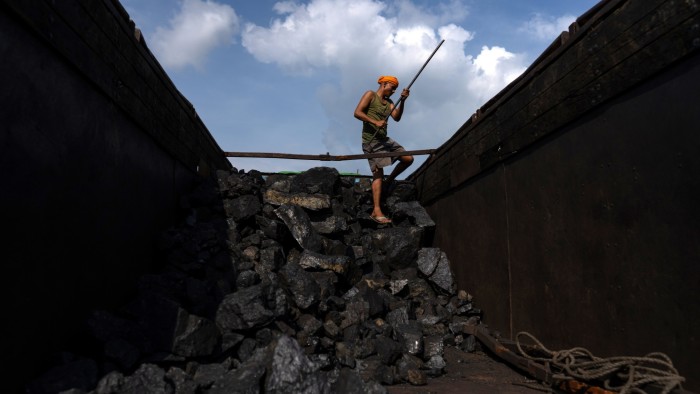Unlock the Editor’s Digest for free
Roula Khalaf, Editor of the FT, selects her favourite stories in this weekly newsletter.
Coal India, the world’s largest coal-producing company, is reopening more than 30 mines and launching up to five more on greenfield sites this year, saying the country’s renewables sector is yet unable to meet its growing energy demand.
“By the time renewable generation and battery storage systems become bigger, better and more efficient, then the share of coal can come down,” PM Prasad, chair of state-owned Coal India, told the Financial Times in an interview.
Prasad said he was reopening 32 defunct coal mines on a revenue-sharing basis with privately owned local partners, with half a dozen scheduled to start production in fiscal 2025-26.
The mines were previously shut down because they were uneconomical, owing to reliance on “manual mining” and “small machines”, he said. In December, India’s coal ministry announced plans to bring closed mines back on line to increase production and reduce imports.
“This is now happening,” Prasad said. The government had already awarded tenders for 27 of such mines this year and the remaining five were “in the pipeline” and would be granted soon.
Most demand for coal in the world’s fifth-largest economy is met by local production, mainly by Coal India. The company has 310 mines operating across the country, supplying about three-quarters of national coal demand.
Despite big investments in solar and wind farms by local conglomerates such as Tata Group, India still relies on coal for 74 per cent of its electricity generation. The government forecasts that share will fall to 55 per cent by 2030 and to 27 per cent by 2047.
Investment in renewable energy in India totalled more than $13bn last year, far short of the $68bn needed annually to achieve the government’s goal of producing 500 gigawatts of power from green sources by 2030, according to energy think-tank Ember.
Prasad said the state-run miner was sticking to Prime Minister Narendra Modi’s commitment for the country to reach net zero carbon emissions in less than five decades.

“We will reach peak coal by 2035, then it will flatten, then it will definitely come down by 2047 and be phased down by 2070,” he said, explaining that a small amount of coal production would still be needed even then.
India holds the world’s fifth-largest coal reserves and the government has said the fuel “remains crucial”.
The country, which is the world’s fastest-growing major economy, has been resisting international pressure to move more quickly to reduce the use of the polluting fossil fuel. India is focusing on trying to become a manufacturing hub.
In March, mining minister G Kishan Reddy said India had “achieved a historic milestone” by producing more than 1bn tonnes of coal in the fiscal year 2024-25, with output up 5 per cent compared with the previous year.
Prasad forecast that Coal India alone would top 1bn tonnes in output by 2029 after producing 781mn tonnes last year. The government expects overall domestic coal production to grow by 6-7 per cent annually to reach 1.5bn tonnes by 2030.
The Coal India chair said the energy needs of the country of 1.4bn people were “very high because of the growing aspirations” and efforts to connect more homes to the electrical grid. To meet such demand, the company was preparing to open up to five new opencast mines on greenfield sites, he said.
Coal India produces most of its coal from opencast mines, which is more polluting than underground mining, but Prasad insisted it mined “in a sustainable manner”. To diversify away from coal ahead of 2070, the company is investing in solar and wind energy projects.
India opened commercial coal mining to the private sector in only 2018 and private conglomerates, including the powerful Adani Group, now own and operate mines, but at small scale compared with Coal India.
“India will have to mine coal for the coming decades, and Coal India is the only company which can do this at scale,” said Rohit Chandra, a coal expert at the Indian Institute of Technology Delhi.


